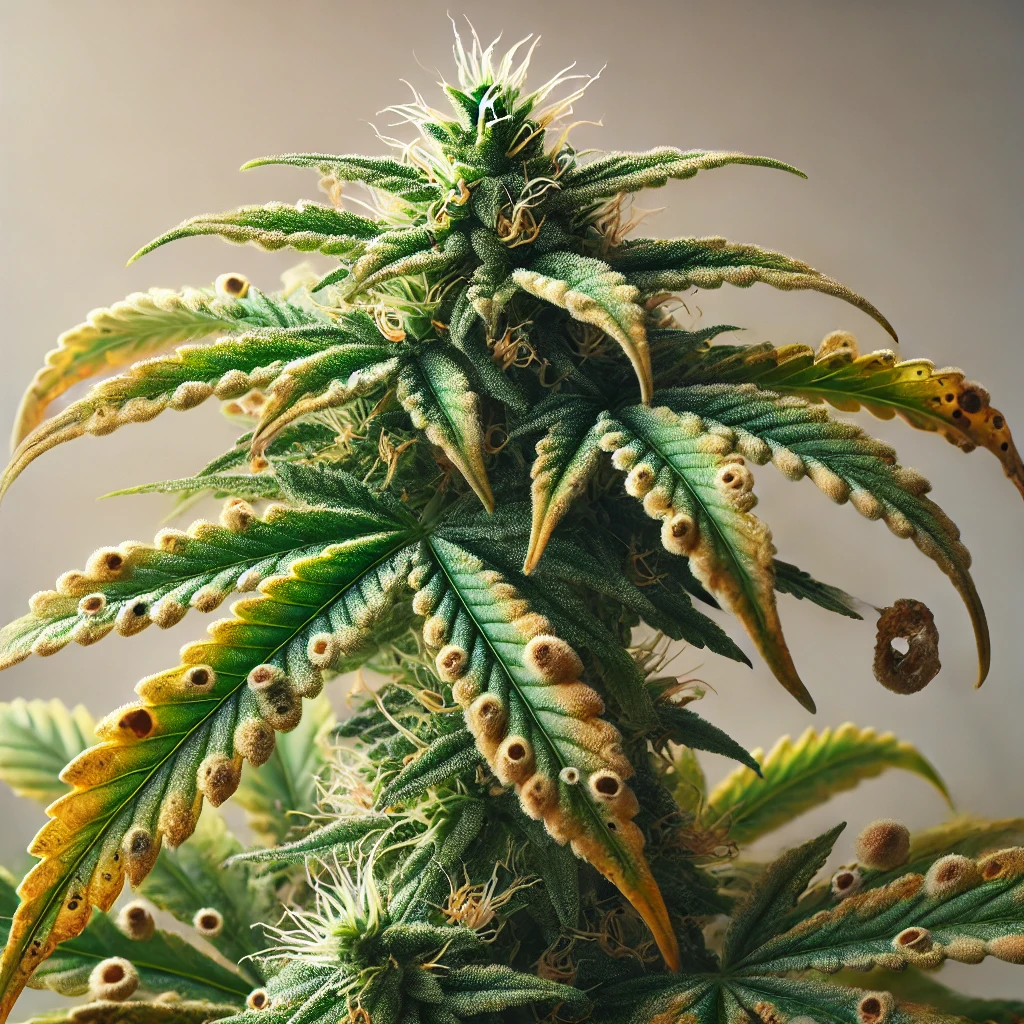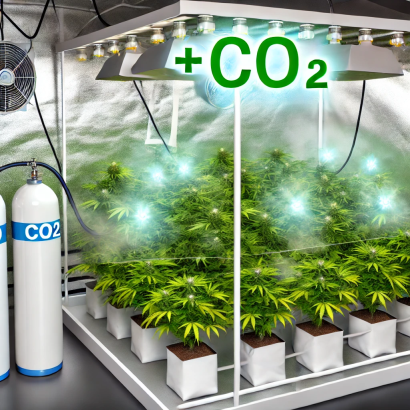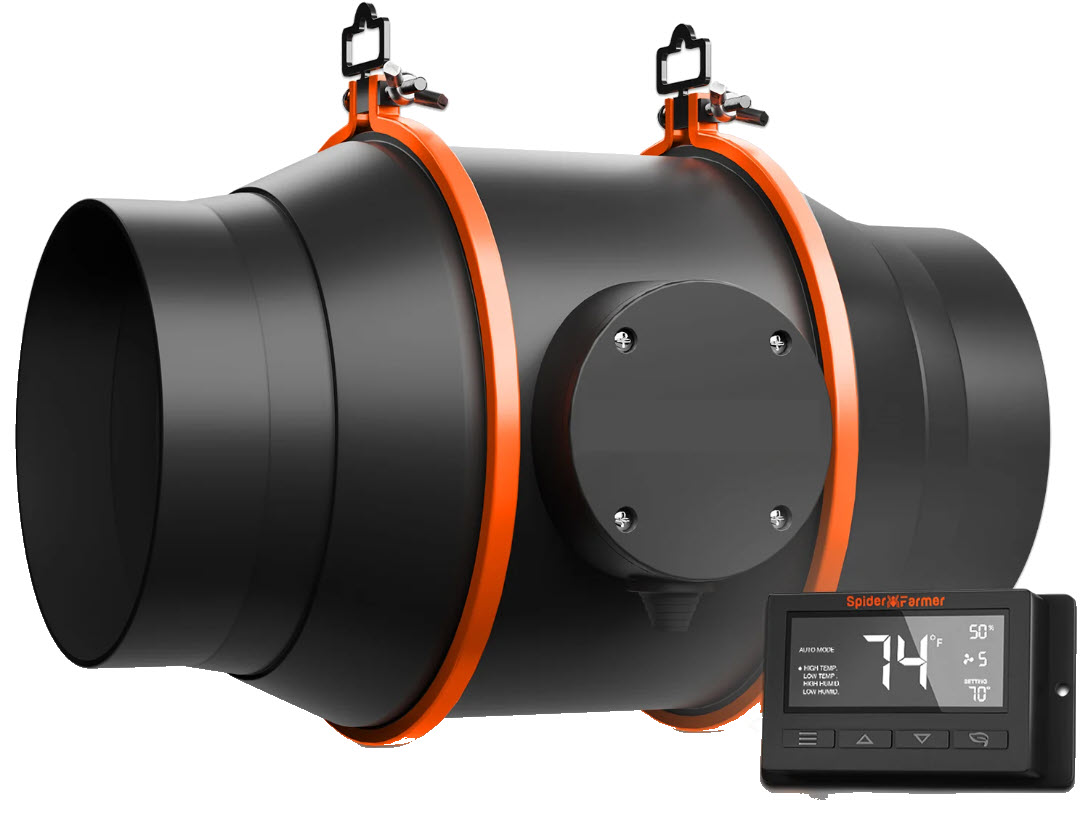Ventilation: The Key to Healthy Indoor Plants
Ventilation is a crucial aspect of indoor plant care that often goes underestimated. Proper airflow not only helps plants grow stronger but also protects them from a variety of issues that can arise in a stagnant environment. While humidity has its own role in plant health, air circulation has an independent and equally vital function. Without effective ventilation, plants can quickly become stressed, leading to reduced growth, structural weakness, and vulnerability to diseases. Here’s a closer look at why moving air is a key part of a healthy grow setup.
1. Strengthens Plant Structure
When plants are exposed to consistent, gentle air movement, they naturally develop stronger stems and branches. This happens because plants respond to the stress of moving air by reinforcing their structures to withstand it. In the wild, plants regularly encounter breezes and winds, which help them grow robust stems to support themselves.
- Enhanced Stem Strength: Just like muscles, plants grow stronger through small amounts of resistance. Airflow helps plants adapt and grow thicker, sturdier stems, which is especially important in an indoor setting where natural wind is absent.
- Reduced Risk of Breakage: Stronger plants are less likely to suffer from breakage under the weight of heavy flowers or fruits, as they’ve been conditioned to withstand movement.
2. Reduces Plant Stress by Regulating Temperature
Indoor grow setups are often warm, which can be beneficial for growth but, without proper ventilation, can quickly lead to overheating. Moving air helps regulate the temperature around plants by dissipating excess heat from grow lights, which helps prevent heat stress.
- Distributes Heat Evenly: Good airflow keeps temperatures balanced within the grow space, reducing hot spots that might cause stress or leaf burn. Plants under hot grow lights, for example, can benefit significantly from a fan that circulates air, preventing heat from settling on the canopy.
- Prevents Heat Stress: Without adequate ventilation, plants may start to droop, wilt, or show signs of stress as they attempt to conserve water under high temperatures. Moving air reduces the risk of this kind of stress, helping plants focus their energy on growth instead of survival.
3. Prevents Disease and Fungal Growth

Air circulation plays a critical role in disease prevention. Stagnant air can create a breeding ground for pathogens like mold, mildew, and other fungal issues that thrive in humid, still conditions. Proper ventilation reduces the chances of these problems by promoting an environment less hospitable to pathogens.
- Reduces Pathogen Growth: Moving air discourages fungal spores and mold from settling on plant surfaces. For example, powdery mildew—a common indoor plant disease—struggles to establish itself in well-ventilated spaces.
- Minimizes Pest Activity: Certain pests, such as spider mites and aphids, prefer warm, still environments. A steady breeze makes it harder for pests to land and settle on plants, reducing the risk of infestations.
4. Supports Consistent CO₂ Distribution

Plants need carbon dioxide (CO₂) for photosynthesis, and an enclosed grow room can deplete CO₂ levels if there isn’t proper airflow to replenish it. Ventilation ensures that fresh air, rich in CO₂, reaches all parts of the plant, supporting robust growth.
- Optimizes Photosynthesis: Consistent air movement keeps CO₂ circulating, allowing plants to absorb it efficiently for photosynthesis. Without proper airflow, plants may struggle to get enough CO₂, especially in densely planted areas.
- Enhances Growth Rates: Plants growing in well-ventilated environments often experience faster and healthier growth, as they have constant access to the CO₂ they need to thrive.
Dos and Don’ts of Ventilation for Indoor Growers
Understanding the right way to set up ventilation will ensure that plants benefit from airflow without experiencing any adverse effects. Here are some essential dos and don’ts for effective ventilation in your grow space.
Dos
- Do Use Oscillating Fans: An oscillating fan provides a gentle, consistent breeze, which keeps air moving without blasting any one spot. Aim for gentle movement on the leaves rather than strong gusts to avoid windburn.
- Do Adjust Fan Positioning: Position fans to create a light breeze across the plant canopy. If your space allows, placing one fan above and one below the canopy can create a balanced airflow, reaching all parts of the plant.
- Do Ensure Fresh Air Intake: Having an intake system to bring in fresh air from outside the grow space will help regulate temperature and CO₂ levels, ensuring plants get fresh air rather than recycled air.
- Do Clean Fans Regularly: Dust buildup can reduce fan efficiency and increase the risk of contamination in the grow area. Make it a habit to clean fan blades and grills regularly.
Don’ts
- Don’t Point Fans Directly at Plants: A fan aimed directly at plants, especially at high speeds, can cause windburn, a condition where leaves dry out and develop brown, crispy edges. Always ensure fans provide indirect or oscillating airflow.
- Don’t Overcrowd Plants: Crowding limits airflow and increases the risk of stagnant, moist air between leaves. Space plants appropriately to allow air to circulate freely between them.
- Don’t Block Intake and Exhaust: Ensure that both the intake and exhaust areas of your grow room are unobstructed. Blocked vents can hinder airflow and trap heat and humidity, leading to increased stress for plants.
- Don’t Rely on One Fan in Large Spaces: For larger grow areas, multiple fans strategically placed are more effective than one high-powered fan. This approach helps achieve balanced air distribution and reduces the risk of uneven temperatures or airflow.
Recommended Equipment for Optimal Airflow
Selecting the right equipment is essential for effective ventilation. Here are some recommendations to help keep your indoor grow room well-ventilated.
- Oscillating Fans: Ideal for circulating air across the canopy and preventing hot spots. Place them at different heights to encourage air movement throughout the room.
- Exhaust Fans with Carbon Filters: Exhaust fans help remove warm, stale air from the grow room. Using a carbon filter on your exhaust fan is ideal for managing odor, especially in small indoor spaces.
- Passive Air Intakes or Ducting: Passive air intake vents allow fresh air to enter the room naturally, and ducting can direct airflow where it’s needed most. In rooms with limited fresh air, a CO₂ generator or bottled CO₂ can help supplement plants' needs.
The Impact of Air Circulation on Plant Health
Plants grown in stagnant air are more susceptible to pests, diseases, and stress, which can significantly reduce growth and yields. Without proper airflow, plants may prioritize survival over growth, focusing their resources on resisting stress rather than on healthy development. Continuous air movement:
- Promotes Vigor and Yield: Healthy plants focus on developing strong stems, branches, and buds rather than compensating for environmental stress.
- Ensures Uniform Growth: By balancing temperature and CO₂ around each plant, good ventilation contributes to uniform growth across the canopy.
Conclusion
Effective ventilation is a foundational component of successful indoor gardening. It strengthens plants, reduces stress, and prevents disease, creating an environment where plants can thrive without constant intervention. Whether you’re growing a small setup or a larger operation, prioritizing consistent air movement will keep your plants healthy and resilient, ensuring a more productive grow room. By following these best practices, indoor growers can create an environment that supports healthy, stress-free plants, setting the stage for strong growth and a bountiful harvest.